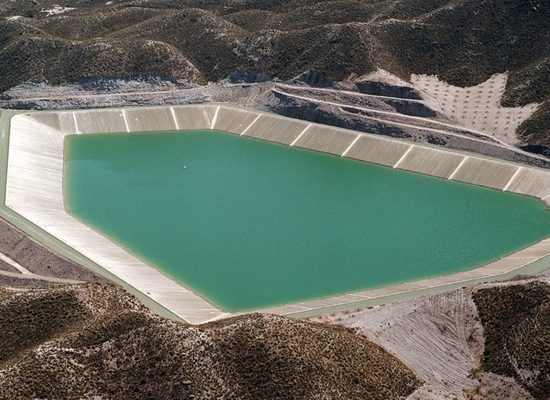ElastoSeal EPDM Geomembrane
Rubber have unique properties and it has proven itself for many years. The material provides an effective and durable membrane with high resistance to chemicals. It has a unique ability to withstand mechanical stresses in the form of pressure and movements. This provides unique benefits as a geomembrane that will be exposed to settlements and movements in the ground.

Superior Material
ElastoSeal EPDM Geomembrane remains elastic regardless of age and temperature and offers high resistance to root penetration. It is not subject to stress cracking and does not have a yield point like thermoplastic materials. ElastoSeal EPDM can be installed exposed to weather and atmosphere, or covered by soil or water. Strength, elasticity and service life remains untouched by mechanical stress, settlements temperatures, chemical and biological influence.
ElastoSeal EPDM Geomembrane can be spliced with the Thermobond splicing technique that is a user friendly and controllable splicing method, where all splicing on site is performed with a hot wedge or hot air gun. The rubber membrane is made to measure and prefabricated in large panels normally 500-1500 m². The size is limited by weight and ease of handling. Pipe boots and penetrations can also be prefabricated.
Applications
- Ornamental lakes and garden ponds
- Leachate reservoirs at municipal landfill sites
- Biological water cleaning
Diversion and collection of surface water from residential areas - Groundwater protection
- Roadside ditches
- Liquid-manure containers for agriculture
- Lining of channels and ditches
- Covers for municipal landfill sites or polluted ground
- Closed storage of industrial waste
Safe Installations
The ElastoSeal EPDM Geomembrane is a completely engineered system, where product, seaming, details, installation technique and site quality assurance guarantees a maximum of safety and performance. The traceability from production to fabrication and finally to installation is always guaranteed. The SealEco Quality Assurance System (QAS), fully applied, gives a complete documentation and quality control over geomembrane production and installation. Installers are always certified by SealEco. In every installation crew a quality manager is authorized.
Environmentally Friendly
ElastoSeal EPDM rubber membrane is a good choice for the environment. The membrane contains no environmentally hazardous substances and does not give any leaching or emission of chemicals during its lifetime. Rubber membranes can be reclaimed, recycled, or reused.
Benefits of ElastoSeal EPDM Geomembrane
- Elasticity and strength – irrespective of temperature the membrane will perform well under maximum working load. Multidirectional Strain – superior to earth settlements and movements.
- Superior durability with service life exceeding 50 years.
- Puncture resistance with full flexibility up to maximum tensile strain.
- Lay flat characteristics – adheres to and provides close contact to any substrate.
- Unaffected by low temperatures and fully thermally seamable even in freezing conditions.
- Optimal surface friction characteristics – soft textured rubber surface provides high interface friction.
- Excellent UV- and ozone resistance– superior service life also in exposed installations.
- High resistance to chemicals – the membrane provides chemical resistance required in waste water ponds.
- Large panels prefabricated to specified sizes according to site drawings. The result is reduced field seaming and short installation times.
- Thermobond seaming technique with hot wedge allows for maximum installation control and quality.
- Thermobond seaming with dual hot wedge allows for conventional air channel QC testing on site.
- Can be easily adhered to substrates of concrete, wood or metal and can be anchored with conventional methods.
- Protrusions and pipes are easily attached with prefabricated boots and hot air seaming.
- Damage is easily repaired, even after long service life and exposed installations.
- Rubber membranes have been used for over 50 years in lining applications and have the longest history of all geomembranes.



